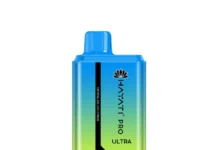Wearable technology has transformed from simple accessories into sophisticated tools that shape how we live, work, and care for our health. As innovation accelerates, wearables are evolving into personalized, data-driven devices embedded seamlessly into our daily lives. This exploration highlights the evolution, current breakthroughs, and future possibilities of on-body tech — along with the challenges and ethical questions that come with it.
The Evolution of Wearable Technology: An Intricate History of Concepts Becoming Reality
Historical Milestones: Key Breakthroughs That Propelled the Realm of Wearables Forward
The narrative of wearable technology traces back to the imaginative 1960s, when the introduction of digital timepieces started to reshape how individuals tracked their days and set the building blocks for later groundbreaking innovations. Early experimental efforts in the 1980s and 1990s, such as sports watches with gaming functions and initial attempts at developing smart apparel, established foundational principles that would later escalate into the multifaceted wearable gadgets prevalent today. One of the significant turning points was the 2009 debut of FitBit, which popularised fitness monitoring among everyday users, demonstrating how wearables could seamlessly weave into daily living. The evolution continued with the emergence of smartwatches like the Apple Watch in 2015, which incorporated capabilities like apps, messaging, and health oversight into a wristwatch design. Each of these milestones epitomises a noteworthy phase in the continuous journey towards integrating technology with personal wellness, interaction, and lifestyle, showcasing a timeline rich with creativity and ambition.
Understanding the Transition: How Wearables Went Mainstream
The transition of wearable technology from niche markets to widespread adoption can be attributed to several interrelated developments. Smartphones became increasingly ubiquitous, their built-in sensors and capabilities paving the way for other devices to expand on these functions. Wearables evolved from standalone products into accessories that augmented our phones, receiving notifications, tracking biometrics, or automating smart homes and boosting desirability. Marketing emphasized influencers and health proponents modeling wearables as symbols of wellness over mere gadgets. Integrations with fitness apps and medical organizations standardized connectivity, driving takeup. Today, onbody wearables are considered mainstream must-haves for monitoring health, productivity, and connectedness rather than innovative but impractical novelties.
Notable Early Embracers: Icons Who Championed Wearable Tech
The cultural shift towards wearable technology is also marked by high-profile early adopters who aided acceptance. Celebrities, athletes, and tech aficionados debuted their use of devices quantifying activity and providing health intelligence. Figures like Serena Williams and LeBron James showcased on social media how wearables aided performance monitoring and wellness, legitimizing wearables as critical to optimal functioning and self-care. Furthermore, partnerships between manufacturers and medical professionals developed credible narratives around health tracking, underscoring its value in prevention, helping wearable tech signify a lifestyle prioritizing health. This fusion of celebrity backing, advocacy, and coverage propelled wearable technology into a domain where it symbolized fitness-focused living, achieving mainstream status.
The Cutting Edge of On-Body Innovation: What’s New in Wearables?
Smart Fabrics Usher in an Era of Form Following High-Tech Function
Technological advancements are allowing fashion and functionality to merge like never before. Embedded with an array of sensors, smart fabrics can provide real-time insights into wellness and performance while retaining one’s personal style. Partnerships between industry leaders such as Levi’s and Google birth garments integrating sensors directly into the material. Temperature regulation, posture correction, activity tracking – these are but a few of the potential applications that move beyond sheer aesthetics. Both fitness aficionados and luxury labels seeking the next big thing drive interest in this blossoming domain. Clothing that stylishly and practically adapts to individual needs and environments addresses consumer demand for customization and versatility. Many innovations utilize eco-friendly materials and manufacturing, resonating with ecologically conscious customers. As integration deepens, the definition of “wearables” broadens to encompass fully interactive attire capable of adjusting based on user requirements.
Biometric Advances: Tracking Health Metrics Like Never Before
With the increasing focus on health, biometrics have become an integral aspect of the wearable technology landscape. These devices now delve beyond basic step counting to monitor intricate health metrics, including heart rate variability, oxygen saturation, blood glucose levels, and even psychological state observation. The emergence of continuous glucose monitors (CGMs) for non-diabetics exemplifies a groundbreaking shift in customized health management, opening doors for proactive health strategies. Equipped with artificial intelligence, such wearables can scrutinize collected data and offer applicable insights, such as reminders to move during periods of inactivity or alerts for abnormal heart rates. The integration of these technologies with healthcare providers further cultivates the ecosystem, cultivating opportunities for telemedicine solutions and deeper patient participation. These biometric advances do not simply represent fashionable features; they stand on the frontier of personalized health and chronic disease management, fundamentally changing how individuals take ownership of their well-being journeys.
Augmented Reality: Merging Digital and Physical Worlds
Augmented reality (AR) is revolutionizing how we interact with our environments by overlaying digital information directly onto the real world. Pioneering companies like Microsoft and Google have developed AR smart glasses that enable users to engage with their surroundings in groundbreaking ways, such as receiving navigation instructions seamlessly imposed on one’s field of vision or participating in an immersive virtual workout guided by a digital trainer. The implications for fields like education, training, and even therapy are vast. As the capabilities of AR technology expand, wearables within this domain can potentially usher in personalized learning experiences and enhance physical activities through game-like environments. This fusion of digital and actual realities enables a highly interactive and intuitive user experience, making AR wearables an energizing new frontier in the continuously evolving landscape of wearable technology.
Challenges and Ethical Considerations: The Dark Side of Wearable Tech
Privacy Issues: Navigating Information Security in Wearables
As wearables accumulate tremendous measures of personal information—from wellbeing metrics to area following—protection concerns have enormously escalated. Customers are usually unaware of how their information is collected, utilized, or shared, potentially exposing them to information breaches. Additionally, the subtleties surrounding assent and information possession raise moral inquiries about the obligations of producers versus the privileges of customers. Significant breaches have prompted calls for stricter guidelines overseeing individual information security in wearables, urging organizations to be straightforward about information practices. Mechanical discussions keep on testing the balance between the advantages of accommodation and the dangers of misuse of sensitive individual data. To guarantee client trust, consistent effort should be made to create strong information insurance systems that regard client protection while empowering people with freedom over their individual data.
Impact on Way of life: Are We Excessively Relying upon Innovation?
As we’ve seen an expansion in reliance on wearables, it turns out to be basic to survey the mental and way of life implications of this innovation. A few investigations propose that reliance on gadgets for wellbeing observing could bring about expanded nervousness, a marvel regularly alluded to as “wellbeing uneasiness” or “wearable-actuated pressure.” The compulsive requirement for checking measurements can divert from one’s capacity to keep up a adjusted way of life, moving center from intrinsic bodily signals to gadget-driven input. In addition, we should consider the likelihood of damaging impacts on relational relationships as people become more engrossed in their screens and gadgets. The call for the improvement of computerized wellbeing is developing as creators and engineers investigate how to make wearable innovation invaluable rather than obstructive, encouraging clients to connect with their wellbeing in moderation while supporting solid way of life propensities and social interactions.
Accessibility: Expanding the Reach of Wearables
While wearable technology has vast potential to benefit many, not all have equal access to these emerging devices. Lower-income groups, seniors, and those with disabilities could greatly benefit from the health monitoring functions of wearables. However, issues of affordability, interface design, and usability often preclude full engagement. The industry must prioritize inclusive and affordable design to ensure that progress in wearables technology touches every segment of society rather than a select few. Through public-private partnerships, initiatives could subsidize wearable costs or integrate them within healthcare services for underserved communities, expanding access and promoting equity in health outcomes. By establishing a precedent of inclusiveness, the benefits of wearables can be fully realized across demographic boundaries.
The Ascent of Wearables: Trends to Watch and Predict
AI’s Pivotal Role in Personalized Health Tracking
Artificial intelligence is reshaping the future of wearable technology and its potential for individual health monitoring. With capabilities to analyze vast datasets, AI can provide customized health insights and predict risks before they escalate. Machine learning discerns patterns in a person’s metrics, enabling sophisticated forecasting to transform preventive care. The deepening integration of AI into wearables also facilitates adaptive learning for users, offering lifestyle, activity, and preference-based guidance. As consumer adoption grows, AI-powered onbody wearables that autonomously refine recommendations and personalize health journeys will become standard. This evolving function of AI promises to refine our understanding of health while enhancing the user experience, ultimately delivering more tailored and impactful healthcare.
Sustainability: Eco-Friendly Innovations in Wearable Tech
The quest for more environmentally-friendly solutions is urgent as wearable technology proliferates. Growing concerns about electronic waste mountains and depleting resources have spurred creators and manufacturers to explore eco-friendlier choices in material sourcing and design. Promising innovations like biodegradable substances, energy-efficient manufacturing processes, and recycling schemes are accumulating momentum. Brands face increasing demands to shrink their carbon footprints, confirming their wares function well while being kind to the planet. For example, several enterprises are testing solar-powered wearables or those constructed from recycled components, appealing to the conservation-minded client. By prioritizing sustainability, wearable tech may lead the charge in responsible production while reinforcing a culture valuing environmental stewardship and considerate consumerism.
Potential Game-Changers: Disruptive Technologies on the Horizon
Undoubtedly, wearable technology’s future glows bright, marked by disruptive technologies poised to remake how we interact with health, communication, and the digital world. Technologies like neurotechnology—devices interfacing with the brain—could potentially unveil new dimensions in health and performance optimization. Wearables that harness virtual reality to facilitate immersive experiences in areas like meditation or therapy might also enter the mainstream. Furthermore, advancements in microelectronics are leading towards the creation of smaller, unobtrusive wearables with expanded functionality. As industry pioneers continue to interweave technology with biology, we might see the integration of wearables with genetic data to offer personalized health insights and wellness plans based on individual genetics. One can envision an exciting future where wearables foster not just health benefits but holistic well-being, transforming personal wellness into an enriching exploration of human potential.
























